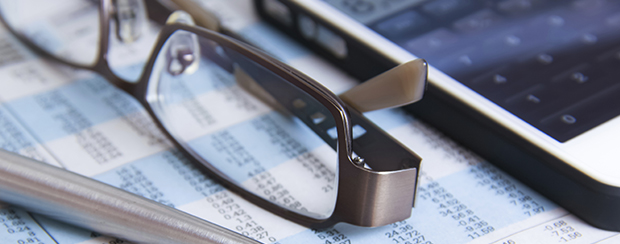During the height of the recent Great Recession, as many as 90 percent of small business owners who applied for bank loans were denied. The economy may have improved since then, but many local banks were shuttered, so the odds are still stacked against entrepreneurs seeking startup capital or cash to grow an existing business. If your business is looking to investors or to a bank for a loan, having a good credit rating is crucial. Use this worksheet to improve and maintain a good credit score.
1. Disentangle personal credit from your business credit
It’s not uncommon for entrepreneurs to start their businesses with personal savings, a second home mortgage or personal credit cards. For many, that’s the only option, but it’s important to establish business credit as soon as you can. Banks want to see that your business pays its bills on time. When you establish credit in your business’s name, your business will get its own credit score. Which of these actions have you taken?
___ Apply for, use and make on-time payments with business credit cards from banks.
___ Get business credit cards for the stores your business frequents, such as Home Depot, Staples or Costco.
___ Put utility bills, subscriptions and leases for office, storefront and warehouse locations in the business’s name and pay them with your commercial bank account.
___ Buy business vehicles in your business name; make regular loan payments to build up your business credit.
___ Establish a profile for your company with each of the three credit bureaus—Experian, Equifax and Dun & Bradstreet.
2. Know what factors contribute to your credit score
Your business credit score is calculated based on several factors. Dun & Bradstreet is said to consider 150 factors in its credit ratings. Determine if you could make improvements in any of the below factors that Experian says it considers:
___ Number of trade experiences
___ Outstanding balances
___ Payment habits
___ Credit utilization
___ Trends over time
___ Public record frequency, recency and dollar amount
___ Demographics such as years on file, SIC codes and business size
3. Use credit to build credit
To create strong credit, your business must use credit responsibly. Maybe you can afford to pay cash outright for a new piece of industrial equipment, but you will build credit if you purchase it with a credit card. Seek a card especially for equipment purchases,or lease the equipment and make the payments on time.
You can also build credit by applying for a line of credit with a vendor, such as a printer or materials supplier. Do so in your company name and pay it back over time, on time. Note, however, that all business creditors do not report trades. You’re only improving your credit reputation if you have credit with one that does. Make a list of the vendors and suppliers from whom you could request credit arrangements, and call to find out if they report their trade information.
Vendor Name Frequency of payments Amount Reports Trades?
___________________________________________________________________
___________________________________________________________________
___________________________________________________________________
___________________________________________________________________
4. Establish a line of credit with the bank
The prelude to applying for a bank loan for your business is establishing a credit line. Even if you don’t need a loan right now, putting up a business asset to get a line of credit from your bank helps build your credit by showing that you are a reliable debtor.
Also, remember, an open line of credit is itself a business asset that makes your business more valuable to a potential buyer. If your business is qualified for a $100,000 line of credit, that asset transfers to any buyer of your company. List the banks you hold commercial accounts with and find out if any would extend a line of credit to your business. You might find that some have already offered to.
| Bank Name | Yes | No | Unsure | Amount | ||||
| ____________________________________ | ______ | ______ | ______ | ____________ | ||||
| ____________________________________ | ______ | ______ | ______ | ____________ | ||||
| ____________________________________ | ______ | ______ | ______ | ____________ | ||||
| ____________________________________ | ______ | ______ | ______ | ____________ |
5. Consider which form of credit to use when
Your business does itself no favors by missing credit card payments and accruing interest debt. When you are confident you can pay off a purchase without accruing interest, use your credit card. Or, take advantage of certain store cards that offer no-interest term periods on purchases above a certain dollar amount.
When you need to make a large purchase—say to support a project that will be funding that purchase—use a credit tool designed to let you pay the lump sum later. Traditional bank loans with payment schedules and fixed interest are going to be your best bet for big business investments. List your various credit options here:
Bank credit cards 1. ___________2. ___________3. ___________4. ___________
Store credit cards 1. ___________2. ___________3. ___________4. ___________
Bank credit lines 1. ___________2. ___________
6. Pay attention to your customers’ credit
When establishing payment terms or extending credit to a customer, ask to see their credit score. A business with poor credit is a risky bet. If your customers aren’t paying you on time, you’ll have a difficult time meeting your own debt obligations. Take these steps to evaluate your customers’ creditworthiness:
___ Require customers to submit to a credit check before you extend credit to them.
___ Pull your customers’ credit ratings from all three major credit rating agencies.
___ Ask for references from other business owners with whom they have established credit.




Scott Mitchell
posted 05/14/2015
Very informative. Thanks!